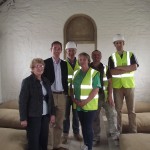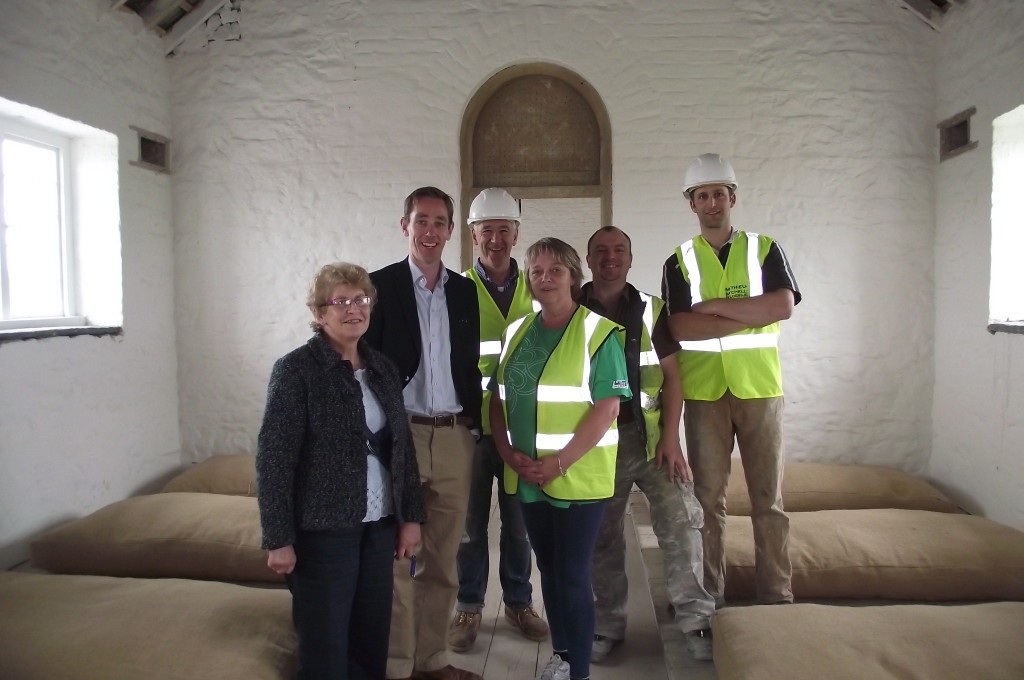Sunday 18th of May
8:30am–4:30pm
163 workhouses operated in Ireland from the early 1840s to the early 1920s. The workhouse or poorhouse has been described as “the most feared and hated institution ever established in Ireland. What was life in the workhouse like?”

This conference is organised by the Irish Workhouse Centre in partnership with the Heritage Office, Galway County Council.
Sunday 18th of May
8.30–9.15 Registration and Tea/Coffee
9.30 The Poorhouses of Scotland by Peter Higginbotham
10.15 Tea/Coffee Break
10.30 A Regional Perspective on Poor Relief in Post Famine Ireland by Dr Georgina Laragy
11.15 Osteoarchaeological Evidence from Irish Workhouse Cemeteries by Dr Linda G Lynch
12.00 Poor Law Reform and the End of the Workhouse post 1920. Perspectives from the North and South of
Ireland by Dr Sean Lucey
12.45 Open Forum
1.15 Lunch
2.10 Fidelma Mullane (The Heritage Council)
2.20 Overview of Workhouse Buildings Today by Emer Brannigan, Irish Workhouse Centre
2.30 Presentations on some current Workhouse Projects:
Callan Workhouse, Co Kilkenny by Patrick Lydon
Donaghmore Workhouse, Co Laois by Trevor Stanley
Bawnboy Workhouse, Co Cavan by Tina Mac Intyre
Carrickmacross Workhouse, Co Monaghan by Kevin Gartland
Birr Workhouse, Co Offaly by Brian Rafferty
Kilmacthomas Workhouse, Co Waterford by Paul Barry
Portumna Workhouse, Co Galway by Ursula Marmion
3.45 Open Forum
4.15 Close of Conference by Mayor of County Galway, Cllr Liam O’Carroll
4.30 Guided Tour of the Irish Workhouse Centre
A network meeting will be held after the conference in the Workhouse for people interested/involved in the conservation and reuse of Workhouse buildings.
To book/for further information
tel 090 97 59200
email [email protected]
post Irish Workhouse Centre, Portumna, Co. Galway
About the speakers
Peter Higginbotham is a writer and researcher best known for his extensive study of the workhouse and related institutions. He is the author of a number of books including The Workhouse Encyclopaedia, The Workhouse Cookbook, Voices from the Workhouse and A Grim Almanac of the Workhouse and the creator of the website www.workhouses.org.uk. He has also contributed to many radio and TV programmes including Who Do You Think You Are?, Heir Hunters, Coming Home and Secrets from the Workhouse.
Gerard Moran lectured at NUI Galway and at NUI Maynooth, where he was director of the MA in Irish History. He has published extensively on nineteenth-century Ireland and among his publications are Sending Out Ireland’s Poor: Assisted Emigration to North America in the Nineteenth Century; Land, Famine, Emigration and Politics and The Mayo Evictions of 1860. He is joint editor of Galway: History and Society (Dublin, 1996) and of the forthcoming Mayo: History and Society.
Mairín Doddy is the Architectural Conservation Officer with Galway County Council. Mairín has been involved in the Irish Workhouse Centre Project from its onset, advising in particular on aspects of conservation and reuse.
Bill Marwick was born in York, Western Australia. His interest in family research led him to Ireland to track down the origins of his great grandmother, Mary Ann Taylor. It transpired that Mary Ann had been an ‘inmate’ in Mountbellew Workhouse. Aged 18, she received assisted passage to Australia in 1853. In his presentation, Bill recounts Mary Ann’s story. Bill is a former mayor and councillor of the cities of Wanneroo and Joondalup. In 2009, he was awarded a Medal in the Order of Australia (OAM) for service to the Western Australia suburban newspaper industry, his local community and his contribution to the recorded history of the Cities of Wanneroo and Joondalup.
Laurence Geary is senior lecturer in history at University College Cork, where he teaches modern Irish history. He has published extensively on the social, political and medical history of nineteenth-century Ireland and on the history of the Irish in Australia.
Georgina Laragy completed her PhD Suicide in Ireland, 1831–1921: a social and cultural study at NUI Maynooth in 2005. Since then she has worked as a Research Fellow on a variety of projects at Oxford Brookes, University of Limerick and Queen’s University Belfast. She is interested in all aspects of Irish social history and has published on poverty, murder and suicide.
Linda Lynch is a human osteoarchaeologist and a licensed archaeological director, with almost 20 years experience in Irish archaeology. Her osteoarchaeological research spans from the early Mesolithic to the late nineteenth century and includes the study of human remains in Manorhamilton, Cashel and Tuam workhouses. She recently completed a PhD in UCC on the osteoarchaeological evidence of health in post-medieval Ireland.
Sean Lucey is a historian of modern Ireland. He has written extensively on Irish social, economic, political and medical history and has a forthcoming book on the poor law in the Irish Free State. He is currently an Arts and Humanities Research Fellow in Queen’s University, Belfast and is researching and writing a book on public health in twentieth century Belfast.
The Irish Workhouse Centre is located in the former Portumna Workhouse and tells the story of the workhouse as an institution in Ireland from the 1840s to the 1920s. There is conservation and redevelopment work in progress. Open 7 days a week from February to November. For more information visit www.irishworkhousecentre.ie or phone 090 97 59200.






